Trichoderma spp. provide a vital service to forests. Many species have found widespread practical use in agriculture, food, paper, and textile industries. Gardeners all over the world love Trichoderma and cultivate this mold, since it colonises plant roots and form symbiotic relationships that promote growth and protect plants against fungi diseases.
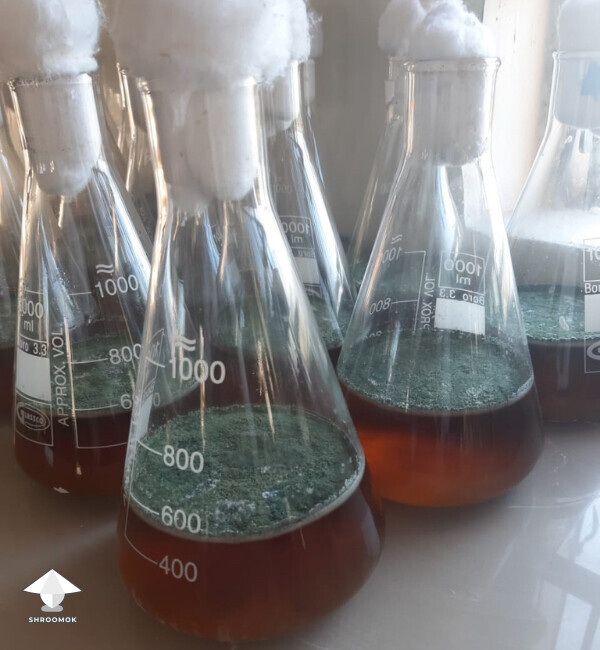
But for mushroom cultivators, the situation is dramatically different — Trichoderma poses a threat to mushrooms we grow!
Green mold in mushroom growing: identification guide, how to prevent and what to do with contaminated mycelium
What is Trichoderma
Trichoderma (aka green mold or forest mold) is a common type of mold. It is present in all soils and is found throughout the world.
Scientific classification:
Kingdom: Fungi
Division: Ascomycota
Class: Sordariomycetes
Order: Hypocreales
Family: Hypocreaceae
Genus: Trichoderma
Type species: Trichoderma fuliginoides
Species: List of Trichoderma species
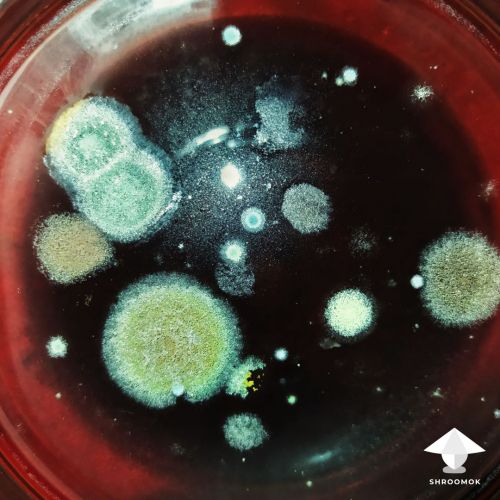
The genus Trichoderma was discovered by one of the founders of modern mycology Christiaan Hendrik Persoon in 1794, but the taxonomy has remained difficult to resolve. For a long time it was believed that it consisted of only one species — Trichoderma viride, named for the formation of green mold.
According to various estimations, this genus includes between 200 to 400 species. The position of the genus Trichoderma is still debatable. Some of them may be synonyms of other species, while others may belong to a different genus. Currently, the List of Trichoderma species on Wikipedia includes 382 species.
How to identify Trichoderma on mushroom mycelium
It is usually difficult for newbie growers to detect Trichoderma mold in time. In the early stages, it looks white like mushroom mycelium. Over time, it can be confused with mycelium bruising. However, Trichoderma has distinctive features that anyone can recognize.
Did you know? There are many other types of mold that can be green in color: bluish-green Penicillium, yellow-green Aspergillus, olive-green Cladosporium, pink-yellow-green Fusarium.
It is almost impossible to identify the type of mold with 100% accuracy by eye. For accurate identification, it must be examined under a microscope to observe morphology, conidiophores, and sporulation, which are important for mold identification. However, by learning and observing specific growth patterns, you can get very close to an accurate diagnosis. Even a rough mold classification or at least just detecting any mold growth without knowing its species is enough for your practical needs in mushroom cultivation.
Disclaimer! The photos in this guide are provided for practical reference only. This is a collection of cases shared by growers in Shroomok community. They have not been examined under a microscope. Misidentification is possible, but absolutely all cases are 100% mold contamination!
Color
Trichoderma begins to grow light gray, turning to intense white or off-white color, then maturing into green as it releases spores.
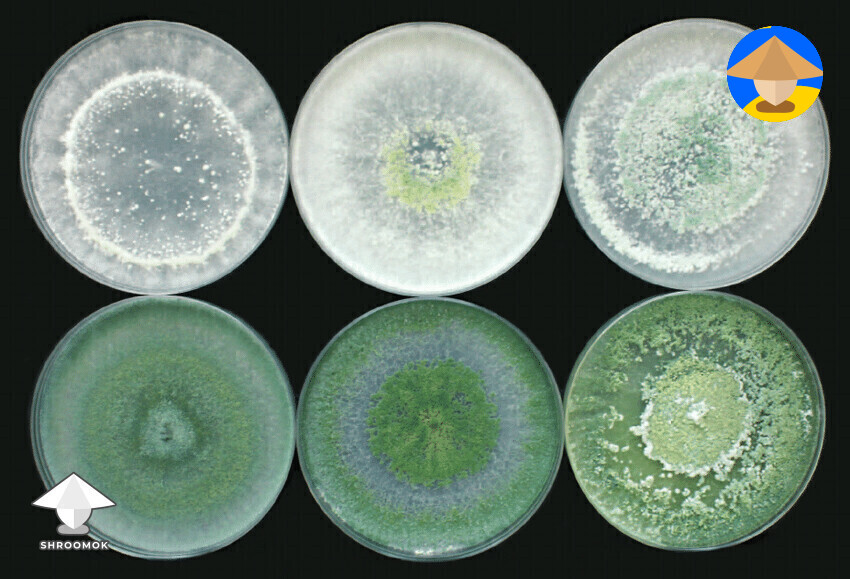
Speed of growth and maturity
Trichoderma is one of the fastest contaminants. Early mold turns green in as little as 8–12 hours, maximum within 24 hours. For comparison, Penicillium takes about 2–3 days to change color from white to green.
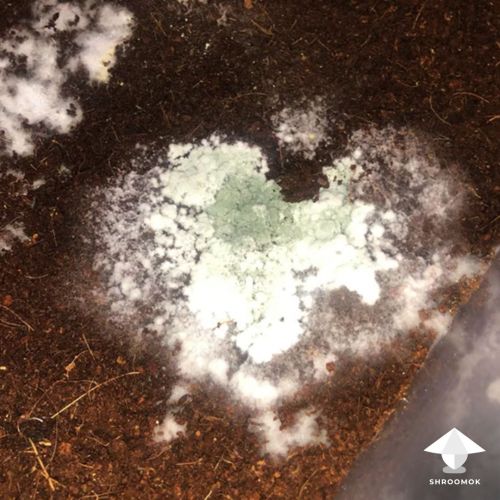
Growth pattern
Trichoderma grows flat and smooth. It is most commonly characterized by a growth pattern resembling desert crusted soil. And it is less commonly characterized by the formation of ring-shaped structures (as seen in Penicillium mold).
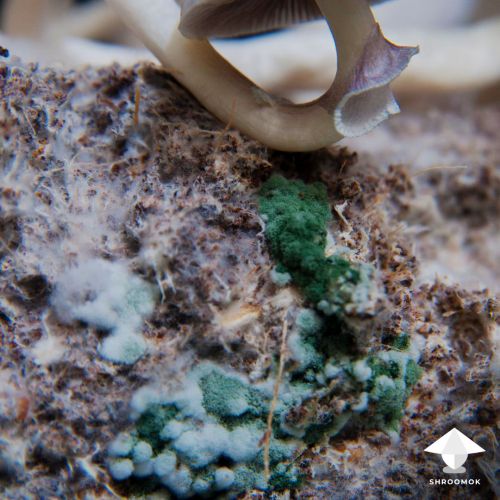
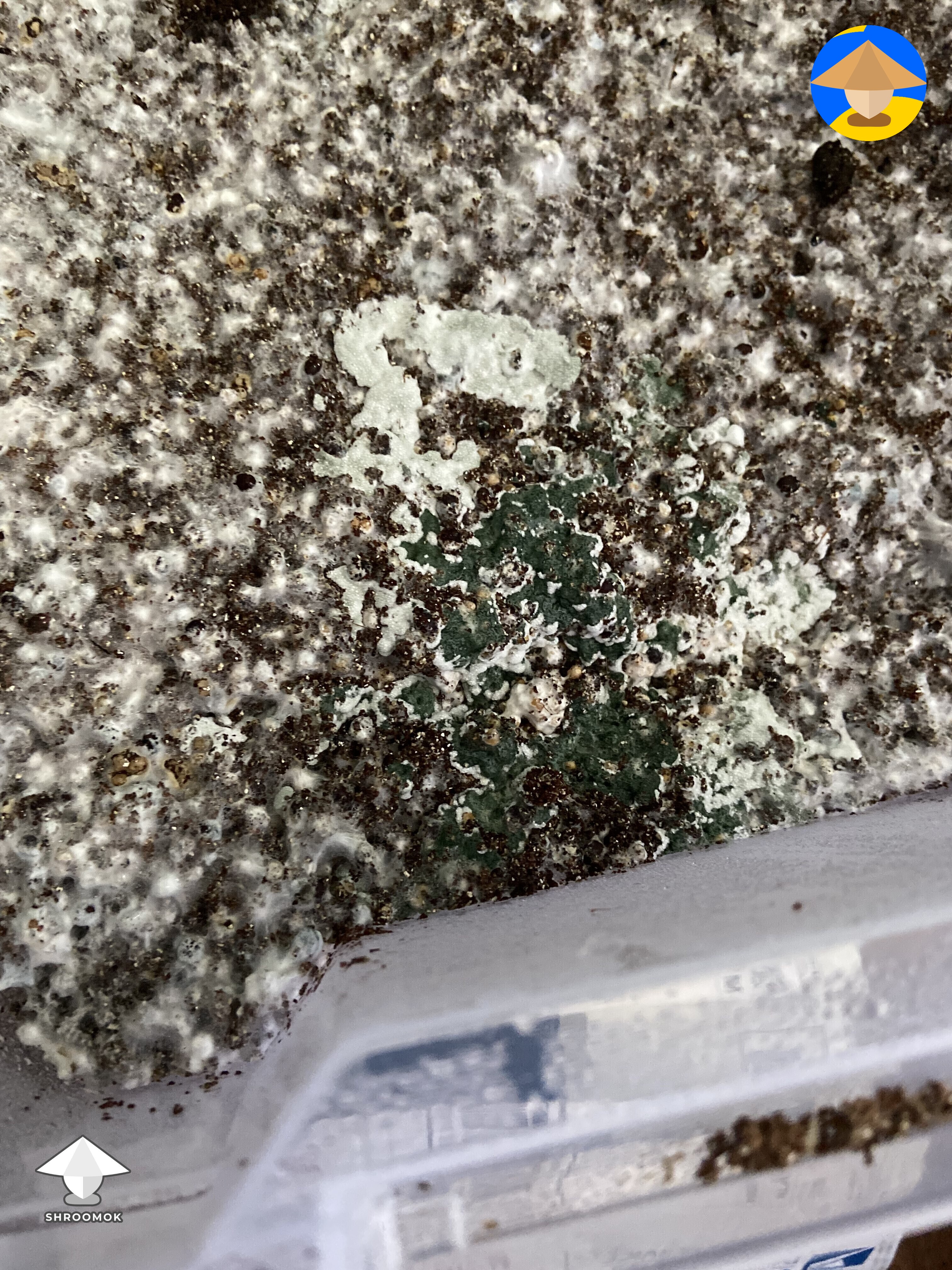
Texture
During active growth, Trichoderma mold forms a powdery layer, which indicates its sporulation phase and the spread of spores.
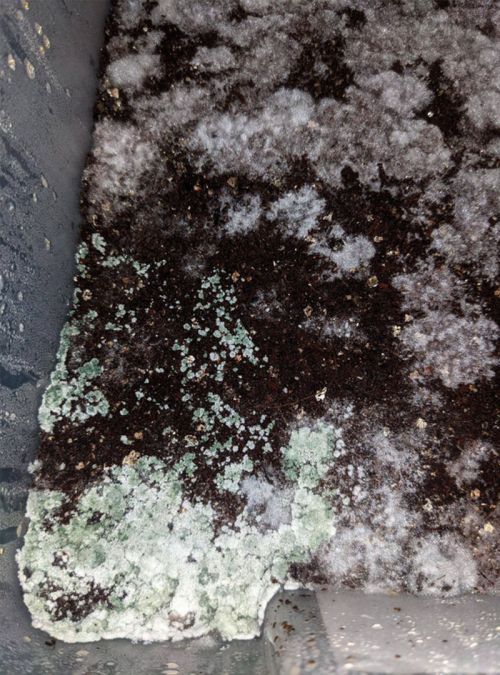
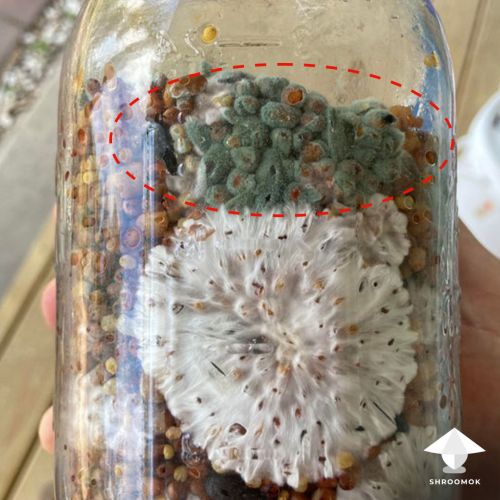
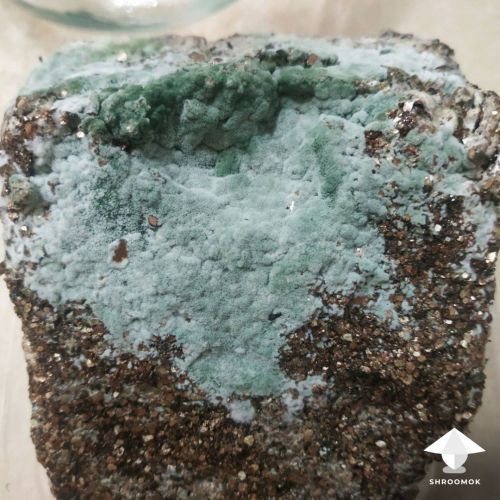
Let's figure out one great example of color and texture differences. Such case can be useful for newbies. Here Trichoderma contamination is white, but the texture is different to mushroom mycelium. Trich is more dense and powdery like. Mushroom mycelium has thin threads.
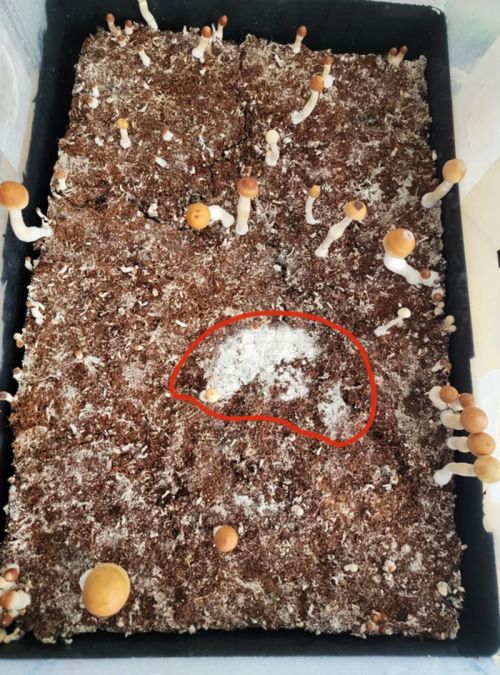
The same mushroom cake, closer photo of the same contaminated area. Here you can see greenish tinge
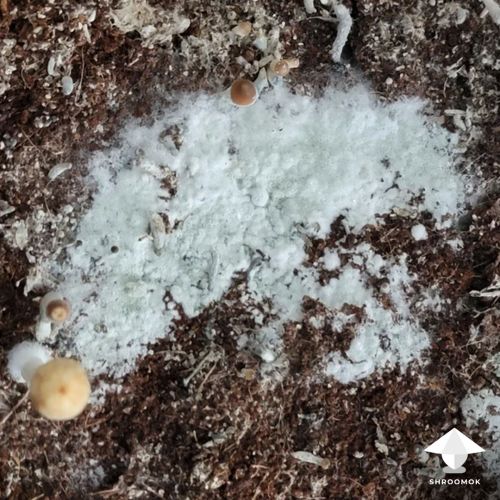
One more example for identification Trich contam on mushroom cake in MonoTub:
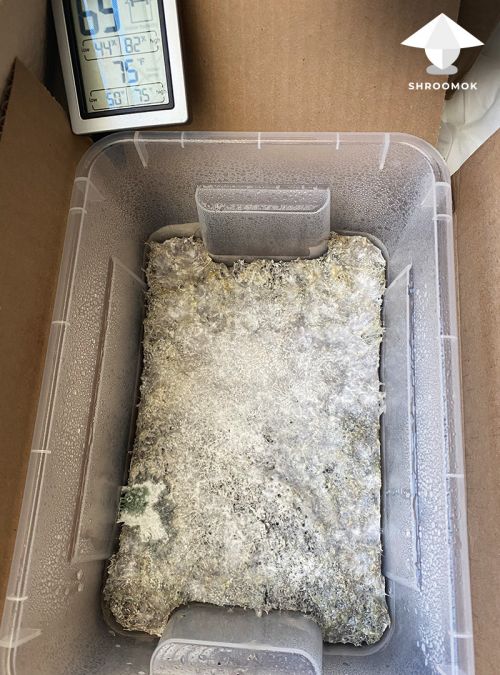
Closer photo of Trich contam on mushroom cake in monotub:
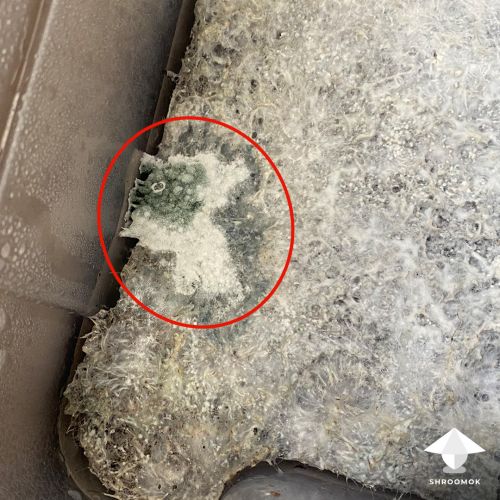
Trichoderma tend to appear inside the cake
Unlike blue-green Penicillium mold, which mainly appears on the top, Trichoderma can develop deep inside the cake/block and can even emerge from the bottom rather than on the top layer.
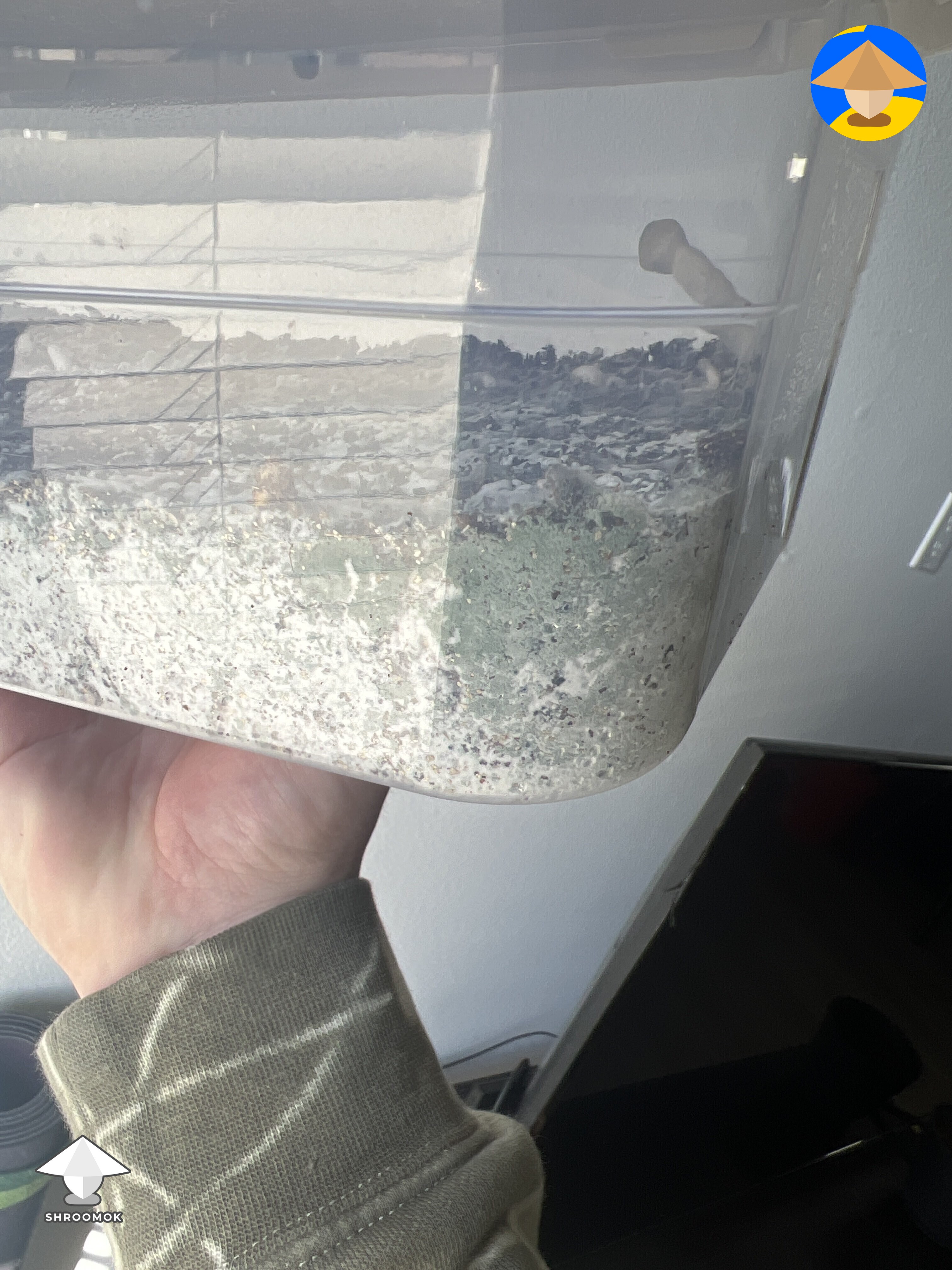
Smell
Usually hard to feel in hobby-home-growing due to small amount of substrate and contamination. On mushroom farm you can feel coconut smell as sign of Trichoderma contamination.
Clear liquid with a typical coconut smell produced by Trichoderma species is called 6-Amyl-α-pyrone
Of course, the best to do mcroscopic examination for identification. But some cases are possible to detect with macro photo (as close as possible) and good light or use simple Magnifying Glass with light on Amazon: Magnifying Glass with 12 LED Lights, 30X $8.99
Mushroom bruises or Trichoderma contamination
It's always confused newbie growers, because Trichoderma spp. (T. harzianum, T. viride, T. koningi) have white color at the very beginning and sometimes have even blue tinge.
Green color you can admit only on the latest stage (sporulating phase). Here are a few examples.
Mycelium bruising and Trichoderma contamination on mushroom spawn:
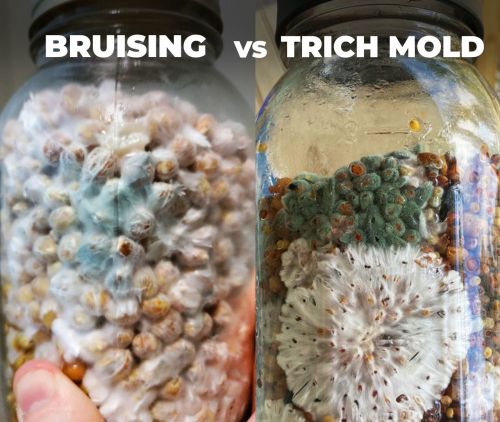
Mycelium bruises and green mold contamination on mushroom cake:
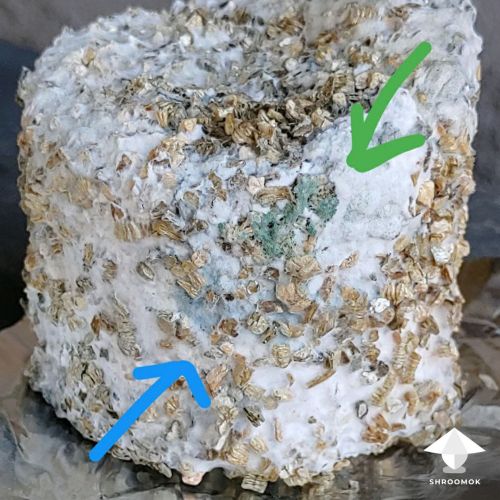
Bright green mold and mycelium bruising deep inside the cake:
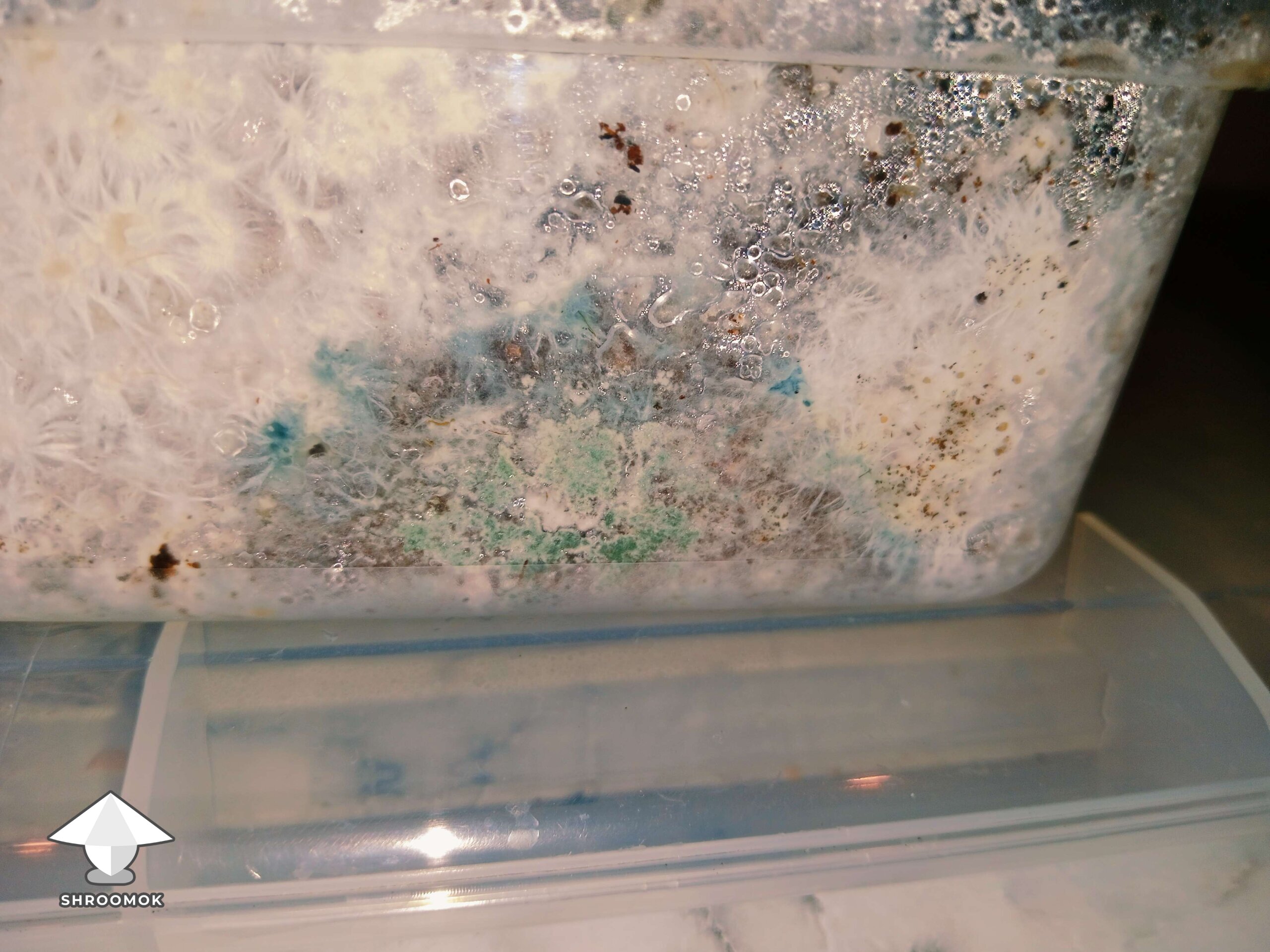
🔴 Check out more examples: Mycelium Bruises or Mold Contamination
Q-Tip or Swab Test for green mold identification
Q-tip test isn't scientific test, but easy first aid life hack for newbie growers.
Swab test can be used to determine whether your mycelium is just bruised or contaminated with mold (any mold!). In this case you'll have either 'YES' or 'NO', but you can't identify the mold species.
This test is possible to use during fruiting period only.
The test is based on the fact that mold spores are sticky and would be stuck on any surface that comes into contact.
To do this, take a clean white cotton swab or a sterile Q-tip and swipe it across the contaminated area(s).
If your cotton swab rubs the green powder on to it, it is highly likely that you are looking at mold contamination.
If your cotton swab comes out clean without any color on it, your mycelium may be simply bruised.
Main causes of Trich mold contamination
Contaminated genetics — spore syringe, liquid culture, agar.
Poor sterility of mycological manipulations, especially during inoculation process (also transfer, spawn to bulk, casing etc.)
Poor bulk substrate pasteurisation.
At a temperature over 140°F (+60°C) for at least 30+ minutes Trichoderma spores die! Pasteurization helps to kill Trich and save useful microflora, that's why pasteurisation method is preferable over sterilization for bulk substrate.
Check out why in Shroomok Community discussion: Sterilization vs Pasteurization for bulk substrate
It is supposed that sterilisation treatment due to high temperature and the cooking effect, released nutrients that benefited the green mold. It is also considered that the reduction of the natural microbial flora of the substrate by the sterilization action increases Trichoderma sp. opportunities to colonize the substrate because of a lower presence of competitive micro flora which reduces the possibility of mycelial growth. Bacterial strains can inhibit the growth of Trichoderma sp by production of volatile organic compounds (Mackie and Whetley, 1999) or by releasing antibiotics (Nielsen et al., 2000)
Trichoderma spp. spread by airflows (spores in the air, in air conditioning and ventilation system), water (misting), tools and insects.
High concentration of Trichoderma spores in the growing room. Especially if you had Trich contamination before. During sporulating phase mold easily spreads in the air when you introducing fresh air and misting growbox or monotube.
Plant pots near fruiting chamber. Plants and Trich can form symbiotic associations and support each other, but such neighbouring may be harmful for your mushrooms
High temperature. Trichoderma molds enjoy 80–86 °F (27–30 °C)
Low pH level (acid soil). Trich molds enjoy pH 4-6.
How to prevent Trichoderma Mold contamination?
Basic rules for Trich prevention
Make up your room regularly. Use non-toxic odor-free fungicide, especially on porous surfaces and if you have molds in your accommodation
Disinfectant Spray Cleaner Fungicide $16.99
Treat all your stuff (tub, tools, jars) with bleach if you had Trichoderma contamination before
Bleach Germicidal Cleaner Spray, 1 Qt $13.83
Bleach Germicidal Wipes for surfaces, 150 Count - $12.49
Keep all mycological manipulations as sterile as possible. Always wear gloves. Use isopropyl alcohol to treat all tools and wipe all surfaces (especially for inoculation process)
Isopropyl Alcohol 70% USP Grade - One Quart Spray $21.99
Disposable Gloves, Black, 50/100 Pack - $9.99
Turn off ventilation and air conditioning 1 hour before any mycological manipulations.
Use SAB (still air box), or glovebox, or air flow hood for inoculation process (grain inoculation, agar inoculation) and transfers (agar transfer, Grain2Grain transfer).
Control pH level of bulk substrate and casing soil to prevent Trichoderma mold. Use buffering agents for pH level adjusting. We'll figure out this important step in the next paragraph.
Sterilise or pasteurise bulk substrate, because it can contain Trichoderma spores.
At a temperature 140 °F (+60°C) for 30 minutes Trichoderma spores die. Bulk pasteurisation is easy and cheaper to make by your own. Just pour hot boiled water in coco coir mix in bucket and leave it to chill overnight.
Trichoderma prefer wood-based, hay, straw fruiting substrate more than manure.
Protect air vents in MonoTub with Synthetic Filters or Polyfill or breathable tape

Shroomok's Choice on Amazon:
Synthetic Filter Discs - 16/30 Pieces $14.99
Poly-Fill Premium Fiber - 250g/8.8oz $12.99
Micropore Paper Tape - 3m $9.43
Wait for 80-100% of top/casing layer colonisation before introducing fresh air and overall fruiting conditions. Trichoderma mold (any mold, for that matter) love and enjoy uncolonised spots
Keeping your fruiting chamber cooler than 80–86 °F (27–30 °C) can discourage Trichoderma growth. Most of mushroom species prefer lower temperature than Trichoderma, there is no conflict with fruiting conditions here
Keep your fruiting chamber on the table or shelf, pick up from the floor. Usually molds flow on the floor with drafts
Good fresh air exchange (FAE)
Trich and all other molds prefer stagnant air in fruiting chamber. Make sure your fruiting chamber has proper fresh air exchange — manual, passive or automated — doesn't matter
Use clean water for humidifier or spray/mister bottle
Keep your gardening projects and plant pots separately from mushroom cultivation projects
Additional optional recommendations for Trich prevention
Use UVC germicidal lamp as additional method for sterilisation tools and flat surfaces
UVC Light Lamp (110V 6W with Ozone) $20.99
UV Germicidal Lamp with Timer $36.99
Use air purifier in your growing room and home overall.
Air Purifiers for Home Bedroom with H13 HEPA Air Filter $37.99
Ionic Air Purifier Ionizer with UV-C Sanitizer $99.95
Use aquarium air pump for GrowBox to introduce fresh air. There is a stone at the end of the aquarium air pump hose; it should be dipped in water. This will filter the incoming air from spores of contaminants through water.
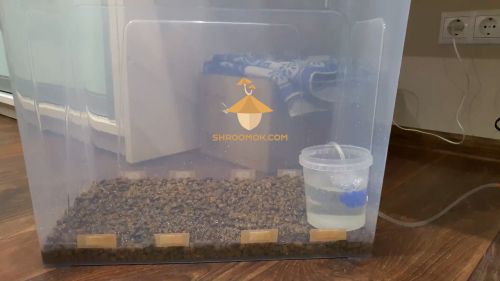
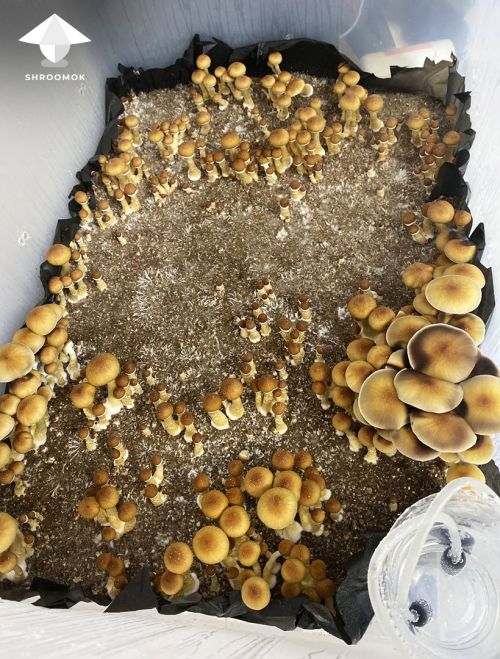
Shroomok's Choice on Amazon:
Quiet Oxygen Pump for 20-100 Gallon - 2 Outlets - $14.97
Adjustable Oxygen Pump for 20-100 Gallon - 2 Outlets - $14.99
Powerful Air Pump - for 20-200 Gallon - 2 Outlets - $21.97
Regular cleaning of the air conditioning and ventilation system at least once a year. It's also important for your health. A/C spread spores extremely effective and mold can grow in your A/C system
How soil pH affect Trichoderma
Trichoderma mold prefer acidic soils (pH 4-6). This is actually a good news, because most mushrooms required neutral or slightly alkaline soil. The optimum pH for actives and edibles is about 6.5-8.5 (except acid-loving edible species, pH 5.5-6.5). This means you can control Trichoderma growing by pH level adjusting.
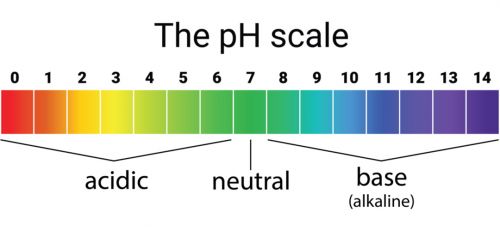
Why is it important?
As the mushroom mycelium colonises the bulk substrate its pH gradually falls. Moreover, flush by flush the substrate is gradually acidified by mushroom waste products, which makes it even more vulnerable for Trichoderma mold.
For example, if we applied a bulk substrate and casing layer with pH 7.5, it gradually drops to pH 6.0-6.5 after the 1st-2nd flush of fruiting. If we used a bulk substrate with pH 5.5-6.5, then after the 1st-2nd flush we'll get acid soil and high risk of Trich contamination.
❗️That's why Trich contamination often appear on the 2nd, 3rd or even 4th flush of fruiting when mushroom cake is acidified
Additives for bulk and casing substrates
For pH adjusting we need to add buffering agent.
The casing ingredients as a buffering agents described in the book "The Mushroom Cultivator: A Practical Guide to Growing Mushrooms at Home" by Jeff S. Chilton and Paul Stamets are based on Calcium carbonate CaCO3 - limestone flour, limestone grit, dolomitic limestone flour, chalk, marl, oyster shells.
There are a few recommended formulas with using some of these ingredients for growing Agaricus culture. BUT! Dolomitic limestone flour is high in magnesium, thus depressed mycelial growth. Limestone flour and limestone grit (aka garden lime) is possible to use for bulk substrate, but it is less effective for pH adjusting than Calcium Hydroxide Ca(OH)2 aka hydrated lime aka slaked lime.
Eventually, such ingredient as limestone almost useless for casing substrate that required rapid pH raise. Why? Limestone is intended for long-term decomposing, for example in the garden, in the soil. Substrates that bear fruit for a month or so do not require long-term pH adjustment. They need a short, fast pH changes.
Hydrated lime (Calcium Hydroxide Ca(OH)2 ) works within 24 hours. That's why hydrated (slaked) lime is what you need to consider for rapid pH adjustment, especially for casing
What about gypsum?
Gypsum or Calcium Sulfate (CaSO4) is often added into bulk substrate (2-5% to dry mass of substrate), but it is NOT a buffering agent itself. It is chemically neutral or near-neutral (pH 7.0) and does not significantly raise or lower the pH, but it has another influence on pH.
Gypsum contains both calcium carbonate and sulphur. While it doesn’t directly shift the pH, it helps stabilize pH fluctuations in the substrate over time by neutralizing certain acids and bases. Therefore, it tends to maintain pH around neutral, as metabolites are released to lower the pH. This action promotes proper pH balance in the substrate. These effects improve the physical structure of the substrate by aggregating colloidal particles giving a looser, more porous structure, which leads to increased aeration within the substrate.
Gypsum provides looseness (particle separation) to reduce soil compaction and increase drainage, aeration in soils.
Gypsum may affect pH by half of a point initially. Its pH-altering ability is minor until the sulfur evolves into sulfuric acid. Calcium and sulfur are essential elements in mushroom metabolic processes. If the substrate is lacking in these essential elements, yields are adversely affected.
Gypsum doesn't change pH, but helps to stabilize pH fluctuations.
Bulk substrate and Trichoderma prevention
You need to know the pH of your initial substrate before and after mixing all ingredients. Check the pH every time you work with new pack/brick.
For bulk substrate the main ingredient is coco coir (loose in pack or pressed in bricks). The pH on label is 6.5. In fact the pH of each pack/brick is varied - pH 5.5 - 6.5.
The best basic recipe for bulk substrate is CVG (Coco coir + Vermiculite + Gypsum) or CVG with added lime (hydrated aka slaked lime):
Coco coir - 1 brick (650g = 1,4 Lbs)
Vermiculite - 8 cups (2 qts)
Gypsum - 1 cup OR Gypsum 1/2 cup + Lime 1/2 cup
Water - 18 cups of water (4.5 qts)
All you need on Amazon here -> Ingredients for Coco Coir mix or CVG substrate
Prepare more or less, just follow the ratio.
How to prepare pH adjusted casing substrate
Actually, pH adjusted casing is a main protection against Trichoderma mold. The base for Casing layer is peat moss aka sphagnum, vermiculite and water. The additive for pH adjusting is hydrated (slaked) lime.
Sphagnum is acid, its pH vary from 2.5-3.5 to 4.5. We need pH 7.8-8.5.
The recipe below always works perfect! It can be used for Psilocybe Cubensis, P. Natalensis, Panaeolus, P. Tampanensis, P. Mexicana and other species for which casing is a required cultivation step.
The optimal casing substrate recipe:
peat moss (aka sphagnum) - 2 cups
vermiculite - 1 cup
hydrated lime (aka calcium hydroxide) - 1 tablespoon
water - 1 cup
All you need on Amazon here -> Ingredients for pH adjusted Casing substrate
Prepare as much as you need, just follow the ratio. Mix your substrate ingredients thoroughly. Let it sit for 8-12 hours.
Before applying the casing, test the pH to ensure it is within the ideal range (7.8-8.2, up to 8.5). Adjust with more lime or water if needed.
Casing layer should be applied with clean tools and in a sanitized area on colonized bulk substrate. The casing layer should be even, around 1/3 inch or 1 cm.
Fruiting conditions should be provided right after casing.
If you find products like 'Trich preventer additive' it's mostly marketing. In fact the main content of such products are calcium carbonate or gypsum + hydrated lime, which are 10 times cheaper. Save your money ;)
How to check soil pH level?
The best and the most accurate method is Soil pH meter or Digital soil tester
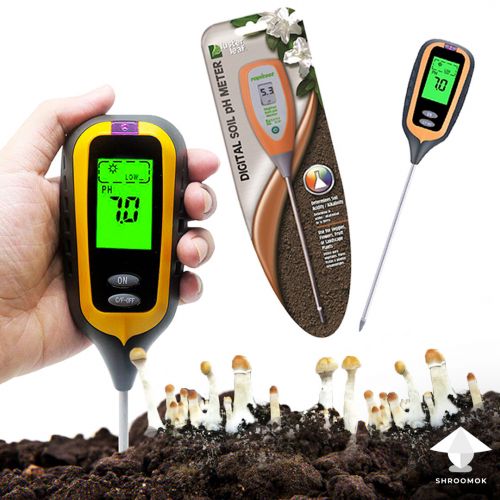
Insert the tester tip into substrate and in a few minutes check the result. Such simple device may be useful in gardening.
Shroomok's Choice on Amazon:
Luster Leaf Digital Soil pH Meter $14.41
Digital, Luster Leaf, Soil pH Meter - $23.25
Digital, Luster Leaf, 3 Way Analyzer for Soil pH - $26.90
Cheap and easy way is pH Paper Test Strips. Such tests may be useful in gardening as well
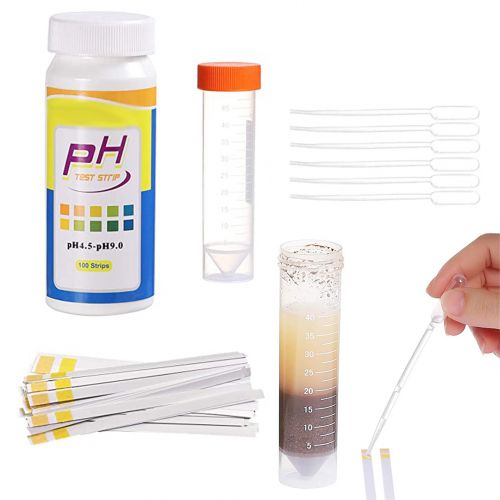
Use distilled water and mix it with the soil in 1:1 ratio. Use paper test strips to determine the pH level based on the color chart.
Shroomok's Choice on Amazon:
Soil pH Test Strips Kit, 3.5-9 Range, 100 Tests - $12.98
Improvised amateur method to determine pH level is acetic acid or vinegar.
Take a sample of wet soil and add a few drops of vinegar. If bubbles and foam appear, then soil is alkaline. If the amount of bubbles is small, then neutral, if no bubbles at all - soil is acidic.
Of course, this method will be rough and very approximate. You won't be able to adjust accurately the pH level in this way.
Rehydration in pH adjusted water to prevent Trichoderma contamination
One of the methods to reboot pH level for mushrooms after harvesting is rehydration in alkaline water pH 8.0 - 9.0. The main ingredient we use here is hydrated lime (soluble in water):
Check out details: Soaking mushroom cake in alkaline water
Reapply casing layer to prevent green mold contamination (optional step, but may be beneficial if you catch contam often). Adding new layer of pH adjusted casing (about 0,5 cm) after rehydration helps to manage pH and protect mycelium.
Don't scrap mushroom cake and previous casing layer! Just add new thin layer to reboot pH, thus protecting mycelium
Casing layer is non-nutrient substrate. It is based on peat moss, vermiculite and pH adjusted. That's why casing content is unattractive for molds, but beneficial for mushrooms. Moreover casing top layer retains moisture extremely great and acts as a security guard for shrooms.
Check out details: Casing layer for growing magic mushrooms
What do I do if I see green mold growing?
Trichoderma spp. grow quickly and spread spores like wildfire. That's why isolation is a key!
Get contaminated mushroom cake/block/spawn/agar out of your house immediately! Keep healthy spawn bags/jars, tools, substrates, fruiting chambers, mushrooms far away from contaminated.
Don't open the spawn jar/bag with contaminated spawn indoor, because you can spread mold spores in your room. It's a high contamination risk for your future cultivations.
Treat affected tools/tubs and surfaces with a bleach solution and wipe with alcohol to kill the mold spores. You need to bleach and alcohol everything you think you touched, change the clothes and take a shower.
Bleach Germicidal Cleaner Spray, 1 Qt $13.83
Bleach Germicidal Wipes for surfaces, 150 Count - $12.49
You can bury contaminated mushroom cake and spawn in the garden.
Did you know? Contaminated cakes/blocks/spawn buried in the garden can produce healthy mushrooms outdoors
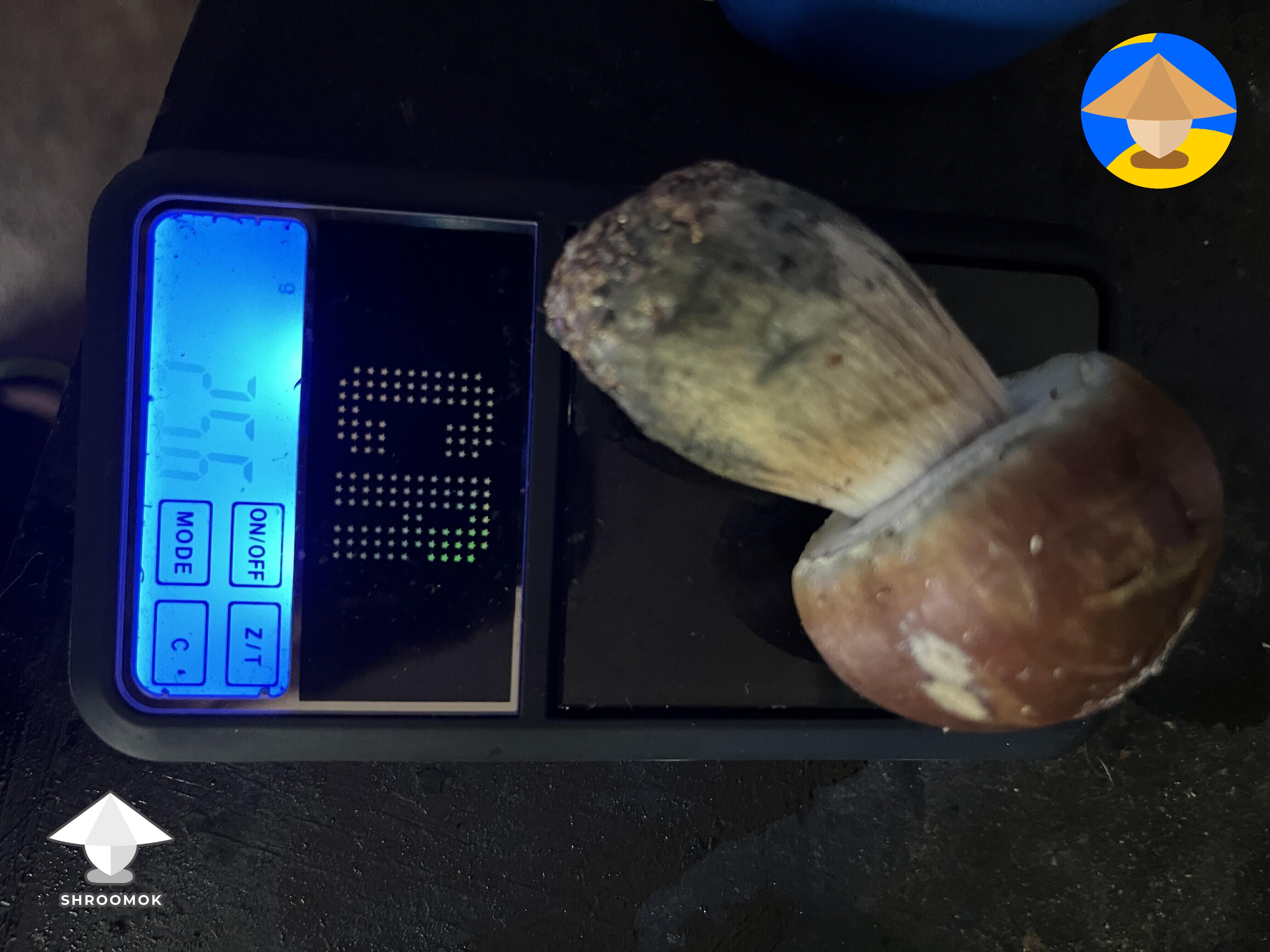
Is it possible to treat Green Mold contamination on mushroom cake or spawn
Trichoderma species are resistant to most agricultural chemicals, including fungicides. It is extremely aggressive and fast growing mold.
Trich spores easy spread in the air. Once you had green mold contamination you have high risk of contamination for the future cultivations and be ready to fight for a long time...
No sense to treat contaminated spawn jars/bags. Throw them away without opening in the room. Open contaminated jars outdoor only!
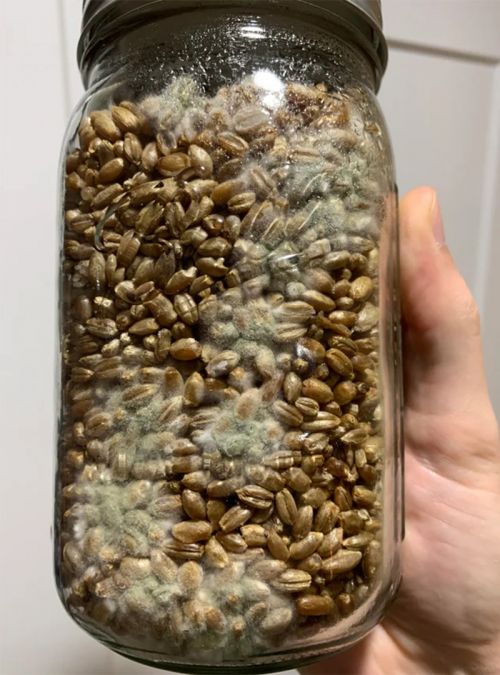
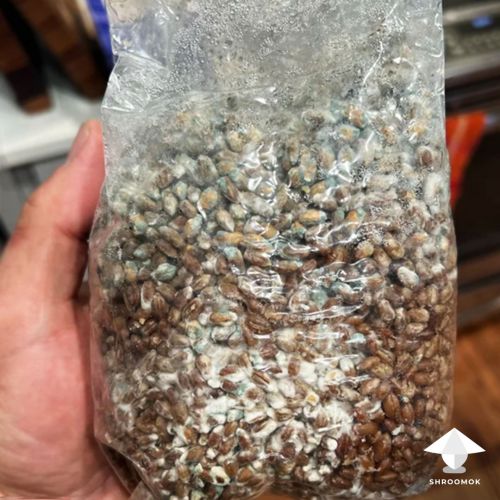
Even such tiny contamination should be tossed!
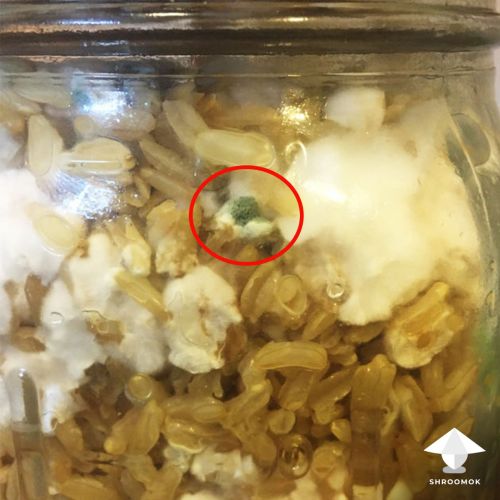
No sense to treat contaminated mushroom cakes/blocks when green color already visible on top layer. Even if you see small green area. Throw it away immediately or bury in the garden
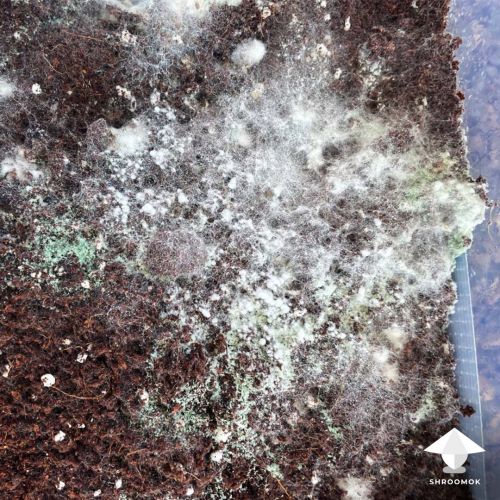
Green mold contamination appeared during the first flush of mushroom fruiting:
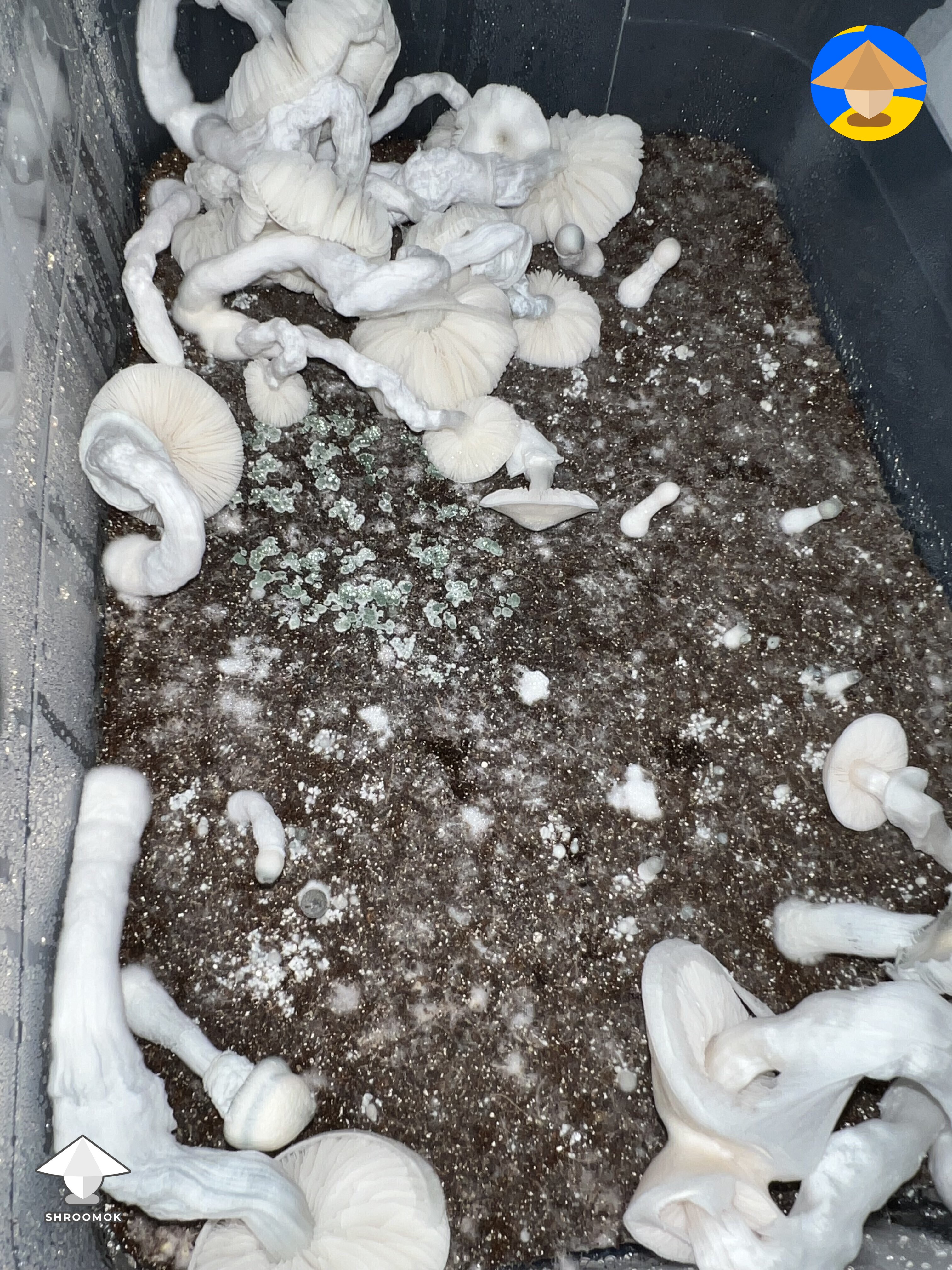
Green mold powder (spores of Trich) and such huge area of contamination is a dangerous sporulating phase. Don't let it get to such critical state!
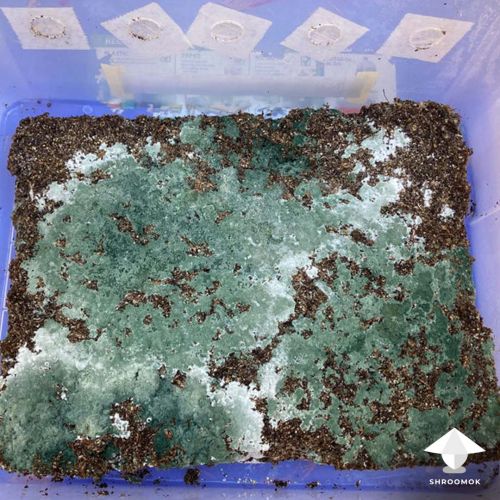
Don't use mushroom caps for making spore prints from contaminated mushroom cake. Trichoderma spores may be on mushroom stems and caps as well and you'll get contaminated spore print from the very beginning.
Any treatment for Trichoderma mold is impossible and risks of future contamination increases greatly. I still recommend to throw away contaminated cakes/blocks to avoid INEVITABLE spreading of spores and work on prevention
Preventive measures are always the best treatment!
If you decide to cut contaminated green area it won't work, after 2-3 days Trichoderma will say hello again, even more than before, because you pushed spores during cutting process on the entire mushroom cake.
If you decide to spray contaminated area with alcohol or hydrogen peroxide (H2O2) you'll spread the spores of Trichoderma with aerosol flow and Trich will appear again soon.
Keep in mind wildfire example as an analogue of spreading Trichoderma spores!
Can I save mushroom culture on agar contaminated with Trichoderma mold
Yes, you can save mushroom culture on agar by transferring healthy part of mycelium to new agar plate. Sometimes it takes 5-10 transfers to get clean culture.
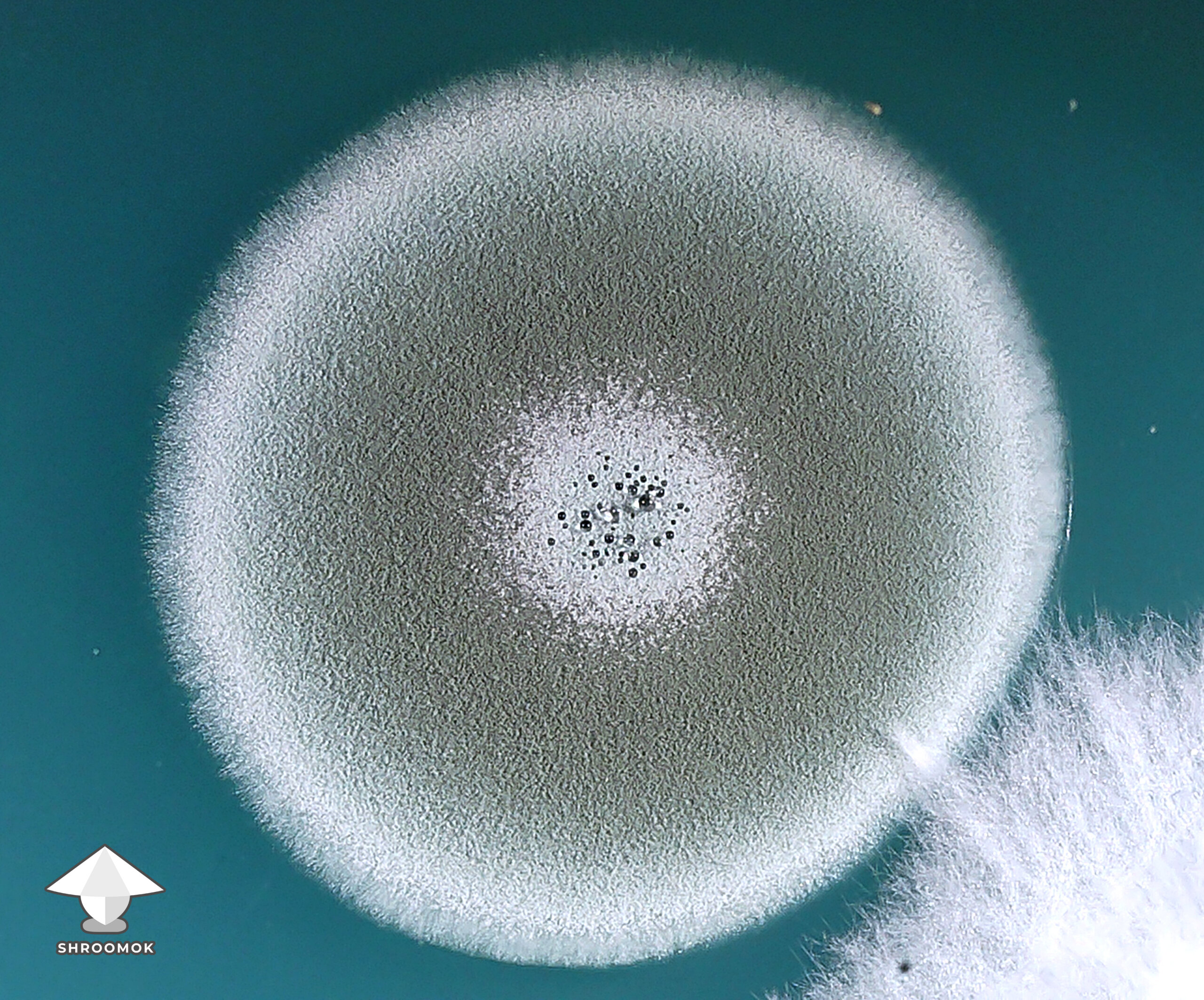
This especially makes sense for rare expensive mushroom cultures or if you have a patience and great desire to play with it.
How to treat Trichoderma mold on the early stage
Any recommendations on treatment green mold isn't professional advice.
If you are newbie grower toss contaminated cake immediately and forget about this paragraph
You can save the flush if you have pins or small shrooms on the cake and suddenly early stage of Trich contam happen.
It is possible to stop mild green mold contamination on the early stage of Trichoderma development only. If you see green color, it's too late to bother about treatment. Throw it away immediately or you'll have to burn down your house, because it's too hard to fight with green mold after sporulating and spreading in the air
Again, this applies to small areas on the early stage (totally white!) of Trich contamination and it doesn't mean you can stop it for sure!
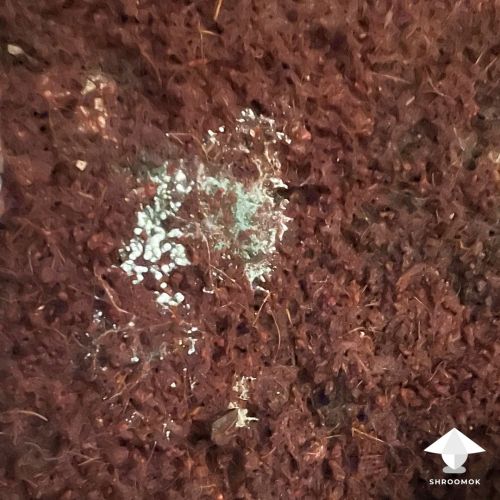
For such cases mushroom farmers use salt application (or baking soda application, or garden lime application). It is also useful method for Penicillium, Cobweb disease treatment, parasitic pathogen Mycogone or Wet Bubble disease and possible to use for Trichoderma as well
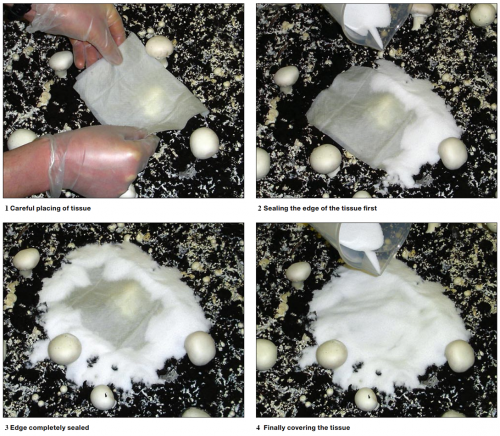
Edge of tissue should be totally sealed with salt!
This way you can seal and stop contamination development and possible spores spreading. But it doesn't mean it won't show up elsewhere on the cake. Trich can grow deep inside mushroom cake.
You can find real case of using this treatment on forum here: Is it green mold?
One more method is acid 30% hydrogen peroxide solution. Spray directly on contaminated area as soon as you noticed bright white area. Don't wait till it turns green!
30% H2O2 is very acidic, protect your skin (wear gloves) and eyes!
Usually both methods works for one flush you are waiting for. It is not recommended to soak such mushroom cake in water after harvesting to avoid possible mold spreading all over the cake.
Such manipulations (salt/soda/lime application) helped me to save the Panaeolus cake that produced 3 more flushes after treatment (size of early Trich was like a coin). Also helped to save Oysters block. So, it works for cultivators!
However, mycologists don't do this and don't recommend any treatment, because they prefer to work on prevention. Although mushroom farmers and home growers don't hesitate to use a treatment for saving harvest. Just keep balance between two points of view!
What if I cut contaminated area
If you cut contaminated area with green color on the substrate in order to save the cake you'll spread contamination by any moves and air currents. In few days it will come back. Like it happened here — contaminated area was removed, but mold covered everything around:
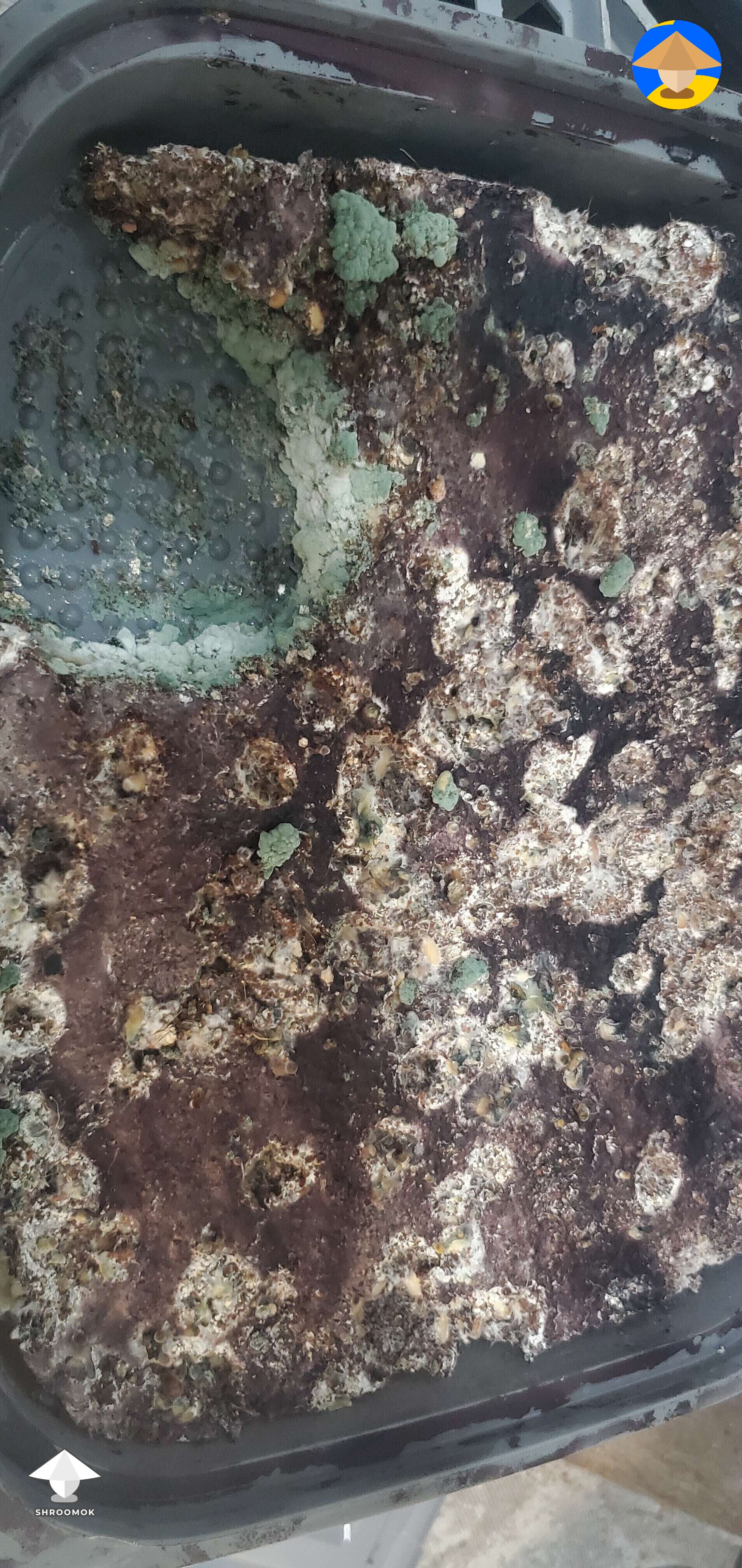
Can I reuse jars and tubs after contamination?
Yes, it is possible to reuse jars and fruiting chambers after washing them in bleach solution to kill mold spores. Wipe fruiting chamber (shoebox/growbox/monotub) with isopropyl alcohol for additional treatment before spawn to bulk.
Mushroom Mycelium vs Trichoderma battle
Mushroom mycelia not so defenseless. Mycelia have immunity and always struggle with any kind of contamination. Sometimes can literally eat bacteria or mold contamination.
This battle between mycelium and green mold contamination was shared by Mycelia P in Shroomok Growers Community on Discord.
Who will win this time!? Take a look day by day fighting
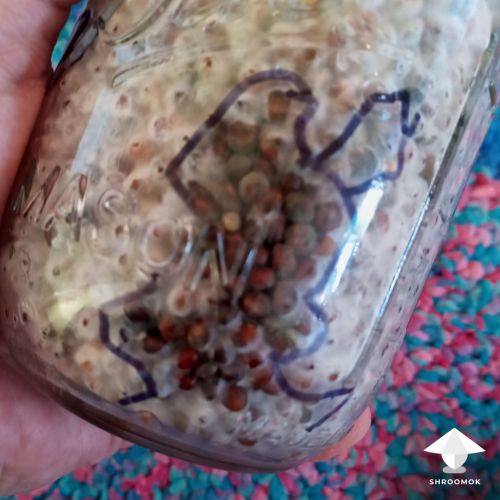
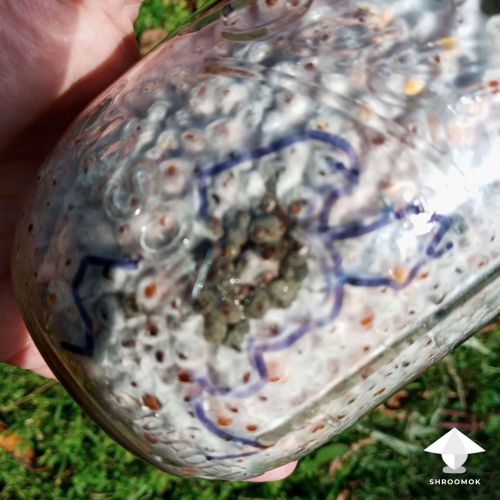
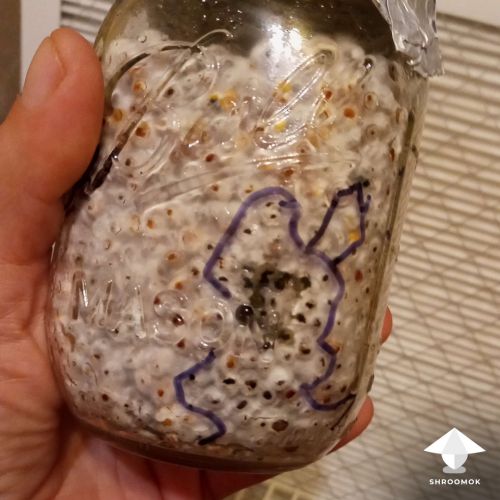
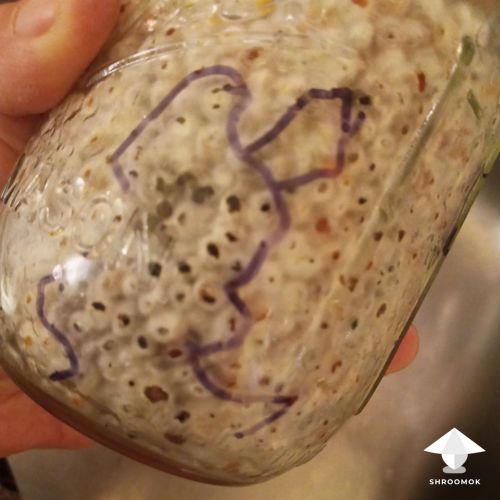
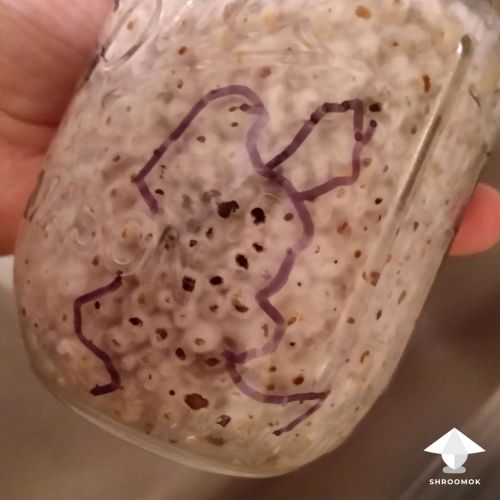
Is Trichoderma useful for anything
Many species have found wide practical application: for food production, pulp and paper production, textile industries, for disposing of waste and especially in agriculture as biocontrol.
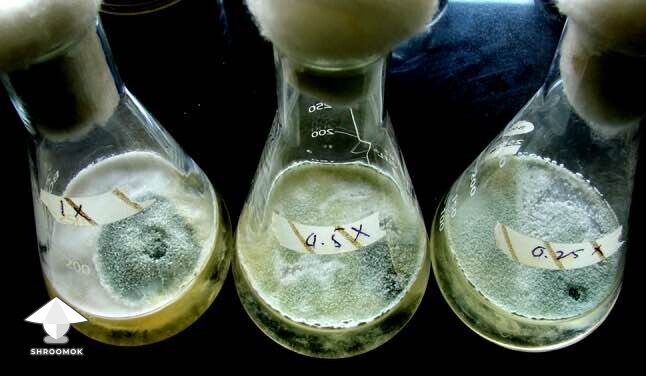
Being a mycoparasite, the Trichoderma viride are very popular natural anti-fungal treatment for plants and bio-fertilizer for seed preparation. Trich creates a protection for plant roots against other fungi. It is natural antifungal treatment for plants. It is also antibiotic producers, especially of wood-rotting fungi. Trich promotes the growth of the plants and plant defense responses.
Trichoderma harzianum is also well-known species and is widely used as a biocontrol agent and for enzyme production.
Trichoderma reesei is a highly efficient producers of many extracellular enzymes. They are frequently used in the food and textile industries for these purposes. For example, cellulases from these fungi are used for denim fabrics (soft, stone-washed effect denim).
So funny, isn't it? Trichoderma is useful... if you’re not trying to grow mushrooms!
Is Trichoderma toxic for people
Human infection by species of Trichoderma (T. atroviride, T. harzianum, T. koningii, T. longibrachiatum, T. viride, T. citrinoviride, T. pseudokoningii, T. reeseiis) limited to individuals with severely weakened immune systems, provoke allergic reaction, coughing, sneezing, sore throats, and asthma.
However, some species are producers of potent mycotoxins.
Trichoderma longibrachiatum (produces small toxic peptides trilonginsis) often found in air conditioner filters, window filters, natural carpets, cabinets, on water-saturated wood items, wallpapers, gypsum walls, mattress dust, bathroom corners, and kitchen.
It can cause adverse health effects in immunocompromised individuals: mycosis, invasive sinusitis (inflamed sinuses), brain abscess, liver infection, necrotizing stomatitis (inflamed mouth), hypersensitivity pneumonitis, skin infections.
Trichoderma viride can produce gliotoxin, that inhibit immunity system and can also be neurotoxic.
Normally, we are capable of fighting off any inhaled or ingested Trichoderma spp. spores. We don't live in a sterile environment, we contact with thousands of molds every day and our immunity system manage it every day. Could you even imagine how many spores are in the woods!? Don't be paranoid! Illness related to Trichoderma is rare in healthy people, but common in those with compromised immune systems.
Regular overall cleaning, regular ventilation of the property, cleaning air conditioning and ventilation filters, using air purifiers, regular monitoring of your property/furniture for signs of moisture and stagnant air are preventing measures to combat mold and protect both your health and your shrooms
Mold spores concentration (any mold, for that matter) differ from house to house. It also depends on the climate conditions and season of the year greatly. This can influence your growing cycles planning and preventive measures
Afterword
I know how contamination cases hurts, especially on the first try. In fact contamination happen to all cultivators, even experienced ones.
Don't regret throwing away the contaminated mushroom cake/jar/bag. Don't afraid to start again. Don't give up, my dear grower. Keep learning and keep growing!
You can find over 100+ photo examples here.: Green Mold (Trichoderma) photo gallery.
If you find this guide helpful you can 🍄 Buy Shroomok a mushroom as a donation, leave a comment below or get help for free on Forum.
You can also request a Personal Consultation with Shroomok.
Have a happy growing and healthy shrooms!


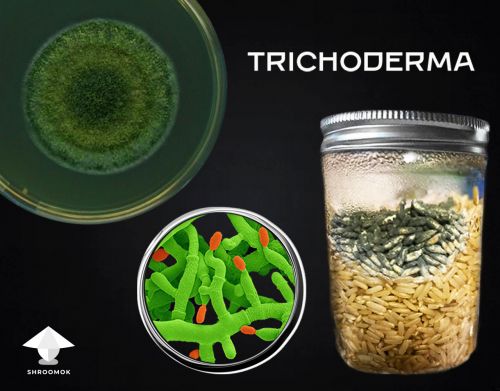
Comments
Good one
Thank you for the excellent information. I had massive contamination and have been dealing with it for months. This really helped me get the resources I need to get my contaminations under control. You're right it sucks when you notice your guys are infected. Thanks for the comprehensive help. Awesome.
Came to your page and realized I screwed up. I was throwing away grain spawn that was bruised, thinking it was trich. Dang it!!
Can powder crushed eggshells also be used as an alkalinizer for my bulk substrate? as far as I can tell they're about 95% calcium carbonate.
@PitZahut, You are right that eggshells are mostly made of calcium carbonate, which is beneficial. However, they are not as effective as limestone flour or, especially, hydrated lime. Why?
Due to their low solubility in water and substrate, eggshells release calcium carbonate very slowly, particularly if not finely ground. This makes them less effective for fast pH adjustments in bulk substrates and almost useless for acidic casing substrates.
Eggshells (as well as oyster shells and garden lime) can be used in bulk substrates, but they are not recommended as the sole buffering agents. They are better suited for long-term applications, such as in gardening or soil improvement. Mushroom substrates, which typically fruit for only a month or so, do not require long-term pH adjustments. Instead, they need a quick, short-term pH increase.
What is best to use?
For bulk substrates: Gypsum (as a pH stabilizer) and optionally hydrated lime (as a fast buffering agent).
For casing substrates: Hydrated lime.
Thank you for your comment. I’ve updated this guide and added more details.
Let me know if you have any questions!
I’d like to add my personal favorite option for contaminated media: bury it outside in an area that gets full sun. And then see if anything happens, I’ve taken a jar meant for indoor grow get contaminated and then leaving it to nature outdoors in sunlight and in a compatible substrate has led to mushroom production in otherwise compromised cases.
If small amount of trichoderma is found on a cake during fruiting phase, is it safe to consume the mushrooms? Obviously I would harvest outside, burn clothes, sterilize tools and tub but prefer not to lose the harvest.
@Mountainous, if mold noticed on the mushroom fruit bodies — never eat moldy shrooms, just as you wouldn't eat moldy bread, fruits, or veggies! If you found a small sample of mold on the mycelium, then seal this area with salt or H2O2 application (as I described in the guide) in order to prevent mold from spreading during harvesting and then pick your good-looking mushrooms.
However, if everything green on the cake I wouldn't recommend to take such mushrooms, especially if you're not 100% sure what type of green mold on the cake – Trichoderma, Penicillium, Aspergillus etc.
No need to burn your clothes, just wash it or wear smth like medical gown or PE raincoat. Btw, sealing the moldy area also protect your clothes.
Clean the tub and tools with bleach.
You can create a forum thread with photos attached (Click "Get help for free" yellow button in the header), and I'll take a look.
Very often growers confuse mold with bruises. Or, conversely, a “small area” from grower's optimistic perspective may be not small at all :-)
Add comment